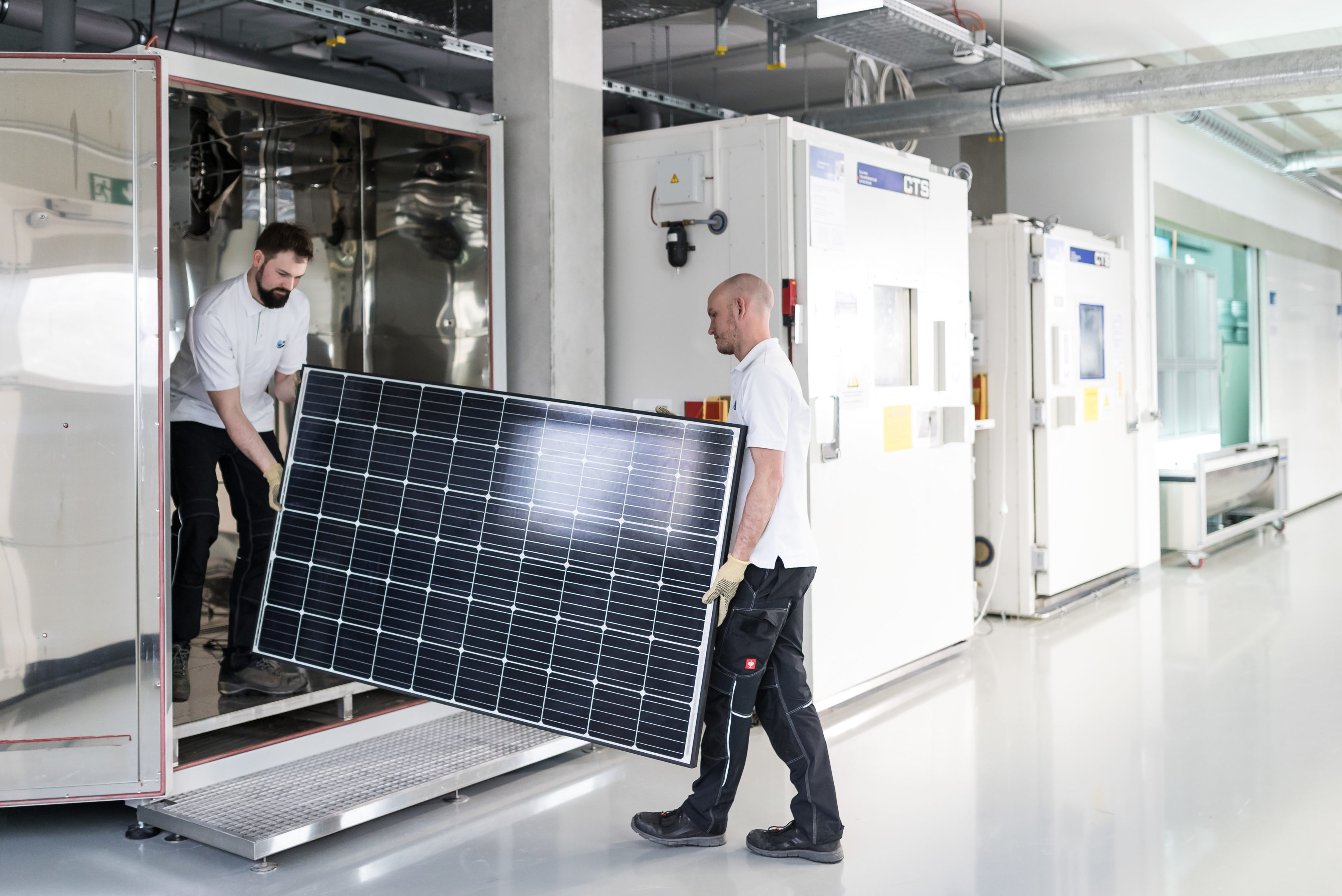ZSW develops an advanced method of lifetime testing for PID

Leakage currents caused by a difference in voltages between the solar cells and the grounded frame can adversely affect a photo-voltaic module’s efficiency. Conventional modules are designed to be impervious to this phenomenon known as potential-induced degradation (PID). However, with system voltages increasing from 1,000 to 1,500 volts, the issue of how to prevent PID is back on the engineering agenda. Having launched a project to investigate the matter, the Centre for Solar Energy and Hydrogen Research Baden-Württemberg (ZSW) has now developed a heavy-duty test. Pushing well beyond the standard test’s boundaries, it provides more accurate information about solar modules’ resistance to PID. Simulating decades of operation, these stress tests have shown that the performance of solar modules remains practically unimpaired even after 60 calculated years of operation when equipped with embedding materials to prevent PID. Long-term forecasts like this are important to the investors, banks, manufacturers and project developers who assess the feasibility of solar projects.
Engineers have known for more than ten years that potential-induced degradation can occur in silicon solar cells. Embedding materials have been found to reliably prevent the partially reversible effect of PID, as the results of tests on recently manufactured modules confirm. They were carried out to the IEC TS 62804-1 standard, typically with 1,000 volts applied to the system and at temperatures of 85 degrees Celsius over a period of 96 hours.
1,500-volt solar modules put to the test
In recent years, though, more and more solar modules and inverters have been designed to run on 1,500 volt systems, which saves on ma-terials, cuts costs and boosts performance. This technology is very popular with owners of solar parks and commercial roof-mounted sys-tems, which is why testing for PID is back on engineers’ to-do list.
ZSW scientists joined forces with the business ventures Specialized Technology Resources España and CS Wismar to address this question as part of a European research program called SolarEraNet. The partners in this consortium tested modules with two types of cells, a resistant version and a variant that is slightly more susceptible to PID. Both cells were combined once each with the standard EVA (ethylene vinyl acetate; EVA-1) embedding material, an improved, highly resistive EVA (EVA-2), and with a polyolefin elastomer (POE).
All investigated variants had passed the customary IEC standard PID test with 1,500 volts. They continued to perform at more than 95 percent of their capability after the trial, with the efficiency loss ranging between 1.0 and 2.4 percent. Even extending the test’s duration to 600 hours did not result in any significant deterioration. However, this test does not allow for more nuanced statements about a module’s resistance to PID.
Heavy-duty test provides data on modules’ resistance to PID
The researchers carried out a far more extreme PID test to gain insight beyond the scope of the IEC standard. It subjects solar modules to the wear and tear of decades of operation to provide realistic lifetime data about their susceptibility to PID. To this end, the partners combined the stress-inducing components of the established test and increased the voltage by 67 percent to 2,500 volts. With trials running up to 1,000 hours, this test was more than ten times longer than the standard test. A conductive metal foil attached to the front provided the contact to the modules.
The results showed that PID causes the performance of modules with the EVA-1 embedding material to drop by up to around five percent after two calculated years of operation in a 1,500-volt system. The re-searchers assumed the worst case and did not consider recovery ef-fects. Modules equipped with EVA-2 held up even better, with the per-formance decreasing up to five percent only after 22 years of operation. According to the ZSW’s calculations, modules with a POE would show practically no signs of PID even after 60 years in operation.
“With our new test, we will be able to determine the resistance to PID with unprecedented precision. The embedding material in the solar modules has a major influence on their resistance to PID. Modules equipped with POE are absolutely stable in that respect,” says Peter Lechner, head of SOLAB, the ZSW’s photovoltaic testing laboratory.


































